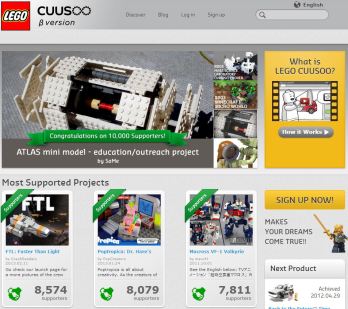Love it or loathe it, social media has changed how businesses need to interact with their current and future customers.
Most organisations now have a facebook page, and the rest are probably thinking about. In reality however what the vast majority have done is to simply create another channel that they need to ‘feed’ – both to recruit ‘likes’ and then to keep them engaged. A browse of the facebook presence of the top 10 selling brands in the UK – so products that shift millions of units a year have, in some cases a few hundred ‘fans’ on facebook (indeed why on earth would you ‘like’ the Branston Pickle facebook page).
The smart organisations are figuring out that social and collaboration platforms like facebook, rather than being just another channel, are actually facilitating a shift in how consumers want to consume.
There is no better example than in the music industry – an industry that has been ‘disrupted’ beyond recognition by the internet age. Crowdfunding platforms like Kickstarter and Indiegogo have demonstrated that a sizable and growing ‘fan’ base want something more – they want to be involved in the creative process whether it is a film or album.
New fan-centric businesses are emerging all the time – Spotify is as much as fan-based music library than it is an online music store. Songkick’s Detour service takes it one step further as does and Richseam.
The media industry is also reeling from the disruption from the shift to digital forms of content delivery is, in my opinion going the same way. Unless they too become fan-centric, what future do they have?
The next leap is to disrupt idea-creation and sourcing from the niche of the creative industry and into the mainstream.
We all have the ability to come up with ideas and in the same way that platforms like Kickstarter give the ‘crowd’ the ability to bring those ideas to life by attracting a fan base, platforms like Lego’s Cuusoo are doing the same in that they provide the opportunity for people to collect fans for their ideas.
For those that have not yet seen Lego Cuusoo, it’s a way that you can get your idea built and sold by Lego and in return you earn 3% of the global sales. The process is simple, you offer your idea to Lego and if it is something they believe they could make you then need to build a fan-base using social networks. If you get 10,000 ‘likes’ they will make and market your idea.
The really clever thing is that when people ‘like’ it they need to register with their social network profile (which imports demographics about the user) and then they are asked who they would buy the product for (age and gender) and how much they would be willing to spend. Not only do Lego get ideas therefore, they get ideas that have already attracted a 10,000 strong fan-base AND a whole load of demographic information about who would buy the product.
 Another example is the co-creation platform from Skoda for the Chinese market called Congming Zhuyi (聪明主义) which means “Clever Together”. To participate, users need to log into the website (which again allows Skoda China to collect demographics about their target market) and submit inspiration or ideas about different topics such as travel and romance. Inspirations can be submitted with text and images, and these can serve as a springboard for other visitors to submit their ideas.
Another example is the co-creation platform from Skoda for the Chinese market called Congming Zhuyi (聪明主义) which means “Clever Together”. To participate, users need to log into the website (which again allows Skoda China to collect demographics about their target market) and submit inspiration or ideas about different topics such as travel and romance. Inspirations can be submitted with text and images, and these can serve as a springboard for other visitors to submit their ideas.
This is more than product testing or customer feedback, this is about putting the fan / customer at the heart of the creative process. The smart organisations will recognise the opportunity to differentiate their products and services by finding ways to create very personal and unique products and experiences. We know that fans will pay a premium for unique and engaging experiences.
The challenge for organisations is to understand how to let go of what they have traditionally done and engage their consumers to co-create.
